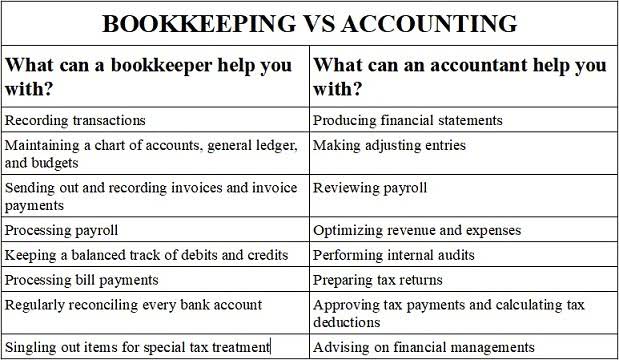
Percentage of sales method: What it is and how to calculate

The percent of sales method is one of the quickest ways to develop a financial forecast for your business — specifically for items closely correlated with sales. If your business needs a very rough picture of its financial future immediately, the percent of sales method is probably one of your better bets. Now Jim has the percentages, he can estimate his sales for next year, and apply them to each line item to get a rough idea of what each of them will look like. Say for example that Jim believes he can increase company revenue (sales) to $400,000 next year.
- A projected income statement calculates how much money will flow in and out of your company over the coming year.
- This method just focuses on accounts receivable and can complement the percentage-of-sales calculations.
- Frank had a holiday hit selling disco ball planters online and he wants to know what his expenses and assets will look like if sales keep going up.
- Once she has the specific accounts she wants to keep tabs on, she has to find how they stack up to her overall sales figures.
Percentage of Receivables Vs. Percentage of Sales
Especially when it comes to creating a budgeted set of financial statements. Quickly surface insights, drive strategic decisions, and help the business stay on track. While it offers a good starting point, it’s essential to use this method alongside other forecasting techniques. This method is seen as more reliable because it breaks down the probability of BDE by the length of time past-due. There is a lower chance that recent purchases won’t be settled by the credit card companies than purchases over a month out. This allows for a more precise understanding of what money may be lost.
Pro Tips on Increasing Sales Percentage

First, it is a quick and easy way to develop a forecast within a short period of time. And second, it can yield high-quality forecasts for those items that closely correlate with sales. These drawbacks show why other financial forecasting techniques are needed.
- It allows you to focus on the most important parts of your post and provide content that is more in-depth in comparison to posts that only have one or two sentences.
- Retained earnings are part of the company’s equity that can be used and added to net income to fund the company’s future projects.
- For the sake of example, let’s imagine a hypothetical businessperson, Barbara Bunsen.
- For instance, creditors might compare interest expense to sales to identify whether the company is able to service its debt.
- With changing budgets and different needs every month, it’s important to know where your money is going and how it affects future earnings.
How to Calculate Using the Gross Profit Method
With Zendesk Sell, keeping track of your customers and your transactions is easy. Liz’s final step is to use the percentages she calculated in step 3 to look at the balance forecasts under an assumption of $66,000 in sales. Liz looks through her records for the month and calculates her total sales at $60,000. It’s been a decent month and she’ll break even, but she wants to know what the following month might look like if sales increase by 10 percent. Most businesses think they have a good sense of whether sales are up or down, but how are they gauging accuracy? With shifting budgets and different departments needing more or less from the company every month, having a precise account of every expense and how it relates to future sales is a must.
- Profitability ratios, for example, are an excellent tool for a more detailed and accurate financial forecast.
- Use it for budget planning, forecasting, and strategic decision-making.
- This is commonly done by percentage — if you know the percent amount your sales will increase, you can apply that to all line items as well, both assets and expenses.
- To determine her forecasted sales, she would use the following equation.
- But, using it along with other techniques can provide an even clearer picture of your business’s financial health.
How to Calculate Sales Percentages in Microsoft Excel
With a revenue of $60,000, she’s not running a corporation, but she should still expect to run into a small amount of bad debt expense. By looking over her records, she finds that for the month, her credit purchases come to $55,000 (with $5,000 cash). Larger companies allow for a certain percentage of bad credit in their financial analysis, but many small percentage-of-sales method businesses don’t, and it can lead to unrealistic projections and unforeseen loss. The percentage of sales method allows businesses to make accurate assessments of their previous sales so they can comfortably project into the future. One of your goals as a business owner is to increase your sales percentage to grow your business and stay competitive.

Bad credit expense refers to purchases that go uncollected due to credit card complications on the customer end. If your sales increase by 20 percent, you can expect your total sales value in the upcoming quarter or year to be $90,000. But even for bigger companies, the percentage-of-sales method may not work as well if they’ve had a big change in operations or structure that’s taken place to drive more sales. Management and external users use this method to analyze the performance of the company and identify key indicators of improvement or signs the company might be in trouble over time. For instance, creditors might compare interest expense to sales to identify whether the company is able to service its debt. If interest expense rises in relation to sales each year, creditors might assume the company isn’t able to support its operations with current cash flows and need to take out extra loans.


How Do Businesses Use Benchmarking to Improve Productivity & Profit?
- By looking over her records, she finds that for the month, her credit purchases come to $55,000 (with $5,000 cash).
- The Percent of Sales Method is a valuable tool for businesses looking to forecast expenses and revenues efficiently.
- When the percentage-of-sales method doesn’t cut it, there are a couple more ways to determine a business’ financial outlook.
- Outside of these items, it is better to develop a detailed, line-by-line forecast that incorporates other factors than just the sales level.
- The monthly accounting close process for a nonprofit organization involves a series of steps to ensure accurate and up-to-date financial records.
- The percentage of sales method is a valuable tool for financial forecasting.
- Over the past three years, the company found that its marketing expenses averaged 8% of total sales, while its operating expenses averaged 12%.
© 2021 Oak Tree. All rights reserved.


Comments are closed.